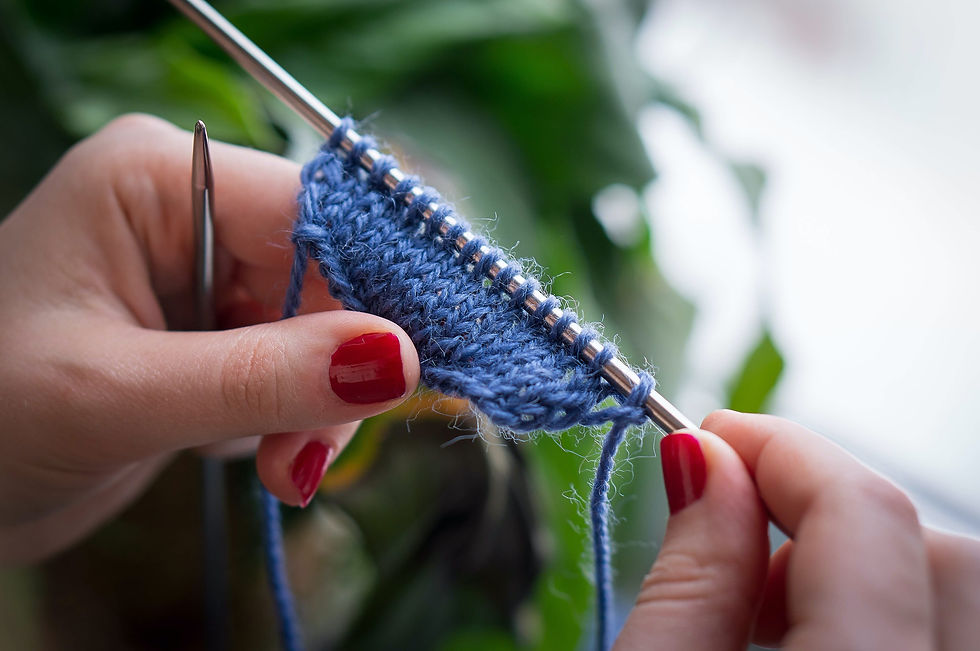About Crochet
- Celeste Ramirez
- Sep 23, 2023
- 3 min read

This is a post I had originally written on my other blog. I want to re-publish it here, and continue my goal of providing information about crochet to anyone who may be curious!
What Is Crochet?
Crochet is a textile art that uses a single hook to create fabric by looping yarn over itself in various patterns. It is similar to knitting, but differs in its basic formula: knitting requires two needles, one to provide foundation and one to work and complete the stitches.

Crochet forms a foundation as the fabric is created, since every stitch must be completed before moving onto the next.

The name crochet is literally the French word for "hook". Insert all the "hooker" jokes here!
Your most common hook types are going to be aluminum and plastic, but hooks can be made from many different materials. I have seen hooks made from resin, horn, wood, and iron.
Hooks come in many sizes. The size of the hook is one determining factor of the size of the stitch, and therefore an important part of the equation for how large a piece of fabric will be. I will discuss yarn weights and hook sizes in more detail later in this series.
A Brief History
I am not a historian, but I feel it is important to know that crochet (and textile art in general) has a vast and fascinating history.
There are two predecessors to crochet: knitting and nålbindning. Nålbindning came before double-needle knitting and is still popular in Scandinavian countries. Double-needle knitting has be recorded as far back as 1100-1200AD in Egypt. [source]
There is not an accurate guess as to when crochet first emerged, but the first published crochet instructions were found in a Dutch magazine in 1823. Prior to that, perhaps around the 1810's, a form of textiles called "shepherd's knitting" were described as using a hook to draw rough wool through loops to create fabric. [source]
Irish crochet had its surge in popularity during the Great Irish Famine between 1845 and 1849. Irish men, women, and children would work to create beautifully intricate lace patterns to sell so they could buy food. Irish crochet is worked with a very fine thread and a tiny hook. [source][source]
By the early 1900's, the intricacy of crocheted designs had taken Europe by storm and popularity for delicate designs for clothing and purses came into fashion. The World Wars slowed this popularity some, but by the 1960's, new possibilities for crochet were discovered yet again. [source]
Since then, crochet has only become more popular, with dozens of books published every year and several long-lived periodicals still in production. Social media has helped fuel this fire, by allowing brilliant fiber artists to put their creations and processes in the hands of people like you, who want to share in the joy of this timeless art.
In Conclusion...
Crochet can be used to make just about anything you can imagine. There are crocheted clothes, such as cardigans, pullover sweatshirts, skirts, shorts, pants, socks, and bralettes. There are crocheted afghans, throws and baby blankets. There are accessories and jewelry, such as hats, scarves, kerchiefs, cowls, bracelets, earrings, necklaces, and rings. There are home decor goods, such as pillow covers, wall hangings, potted plant hangers, washcloths, and pot holders. There are crocheted market bags and purses, and crocheted bookmarks and dust covers. There is a type of crochet that uses one of the core foundational stitches almost exclusively to make delightful plushies and stuffed animals.
Perhaps you already know exactly what you want to make with your newfound interest in crochet. That's great! It will help you keep your motivation up while practicing the basics! But if you don't know what you want to make yet, trust me, you will find something that sparks your interest.
The next post in this series will be everything you need to know about hooks. See you then!





Comments